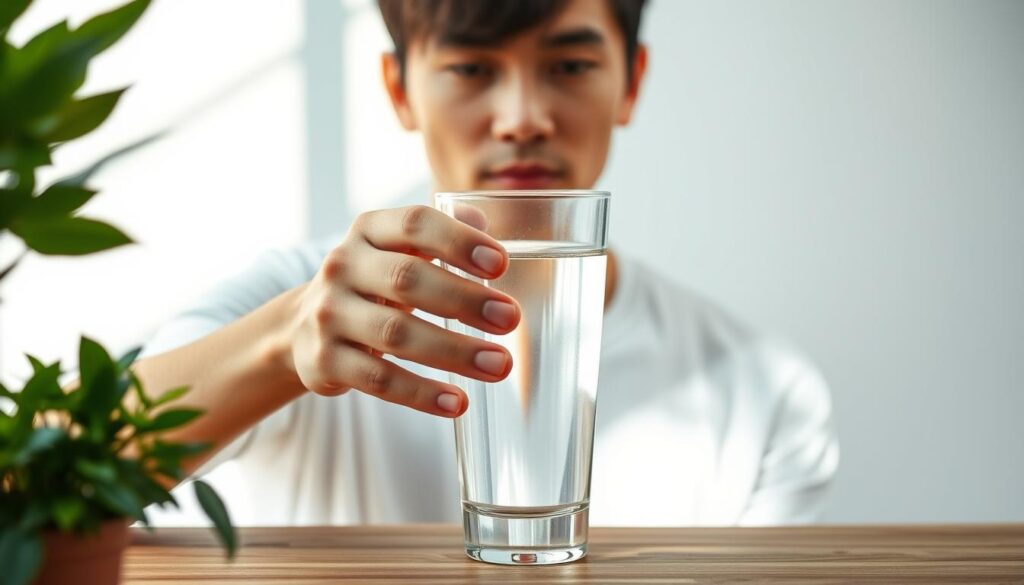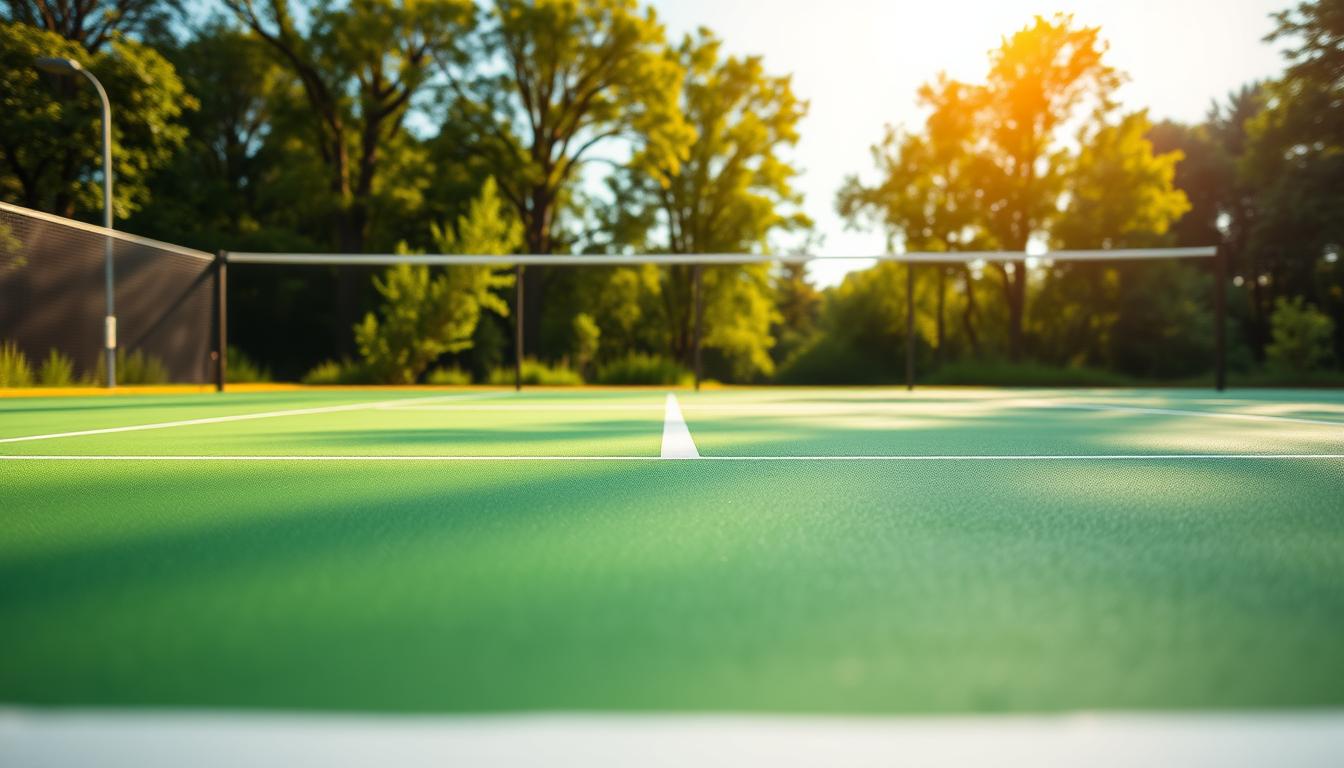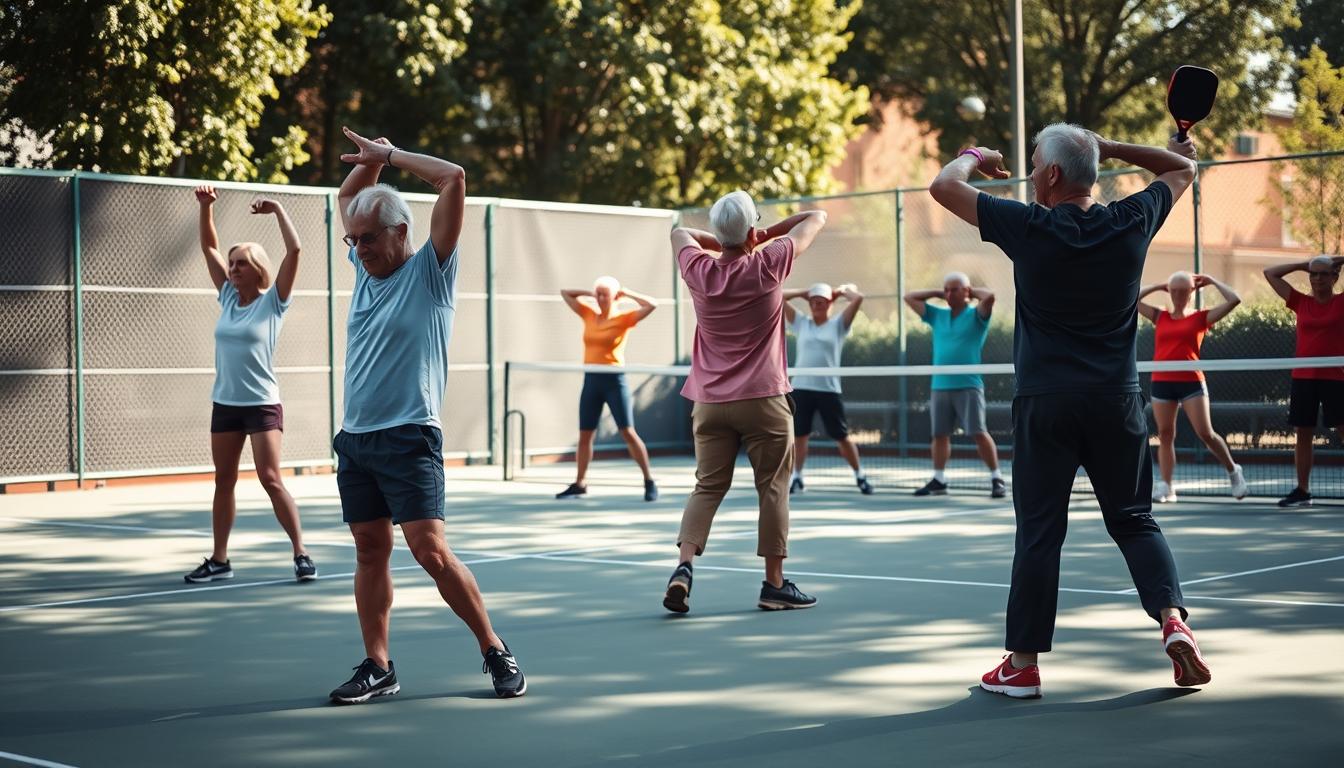Have you ever wondered if a simple, day-by-day plan could keep your energy steady and your focus sharp during long matches?
This short guide lays out a clear, practical plan for players who want to protect health and boost performance on the court. You’ll find step-by-step timing, exact water volumes, and vegan-friendly electrolyte options to use before, during, and after play.
Start with night-before prep and a pre-match top-off, then sip at regular intervals while you play. After the match, simple checks like urine color and a quick weigh-in tell you how much to replace.
Expect clear targets for sodium, carbs, and post-play protein that help recovery without animal products. This piece fits U.S. climates and common tournament schedules so you can follow the plan anywhere.
Why Hydration Matters for Pickleball Players Over 50
Keeping fluids steady during a match directly affects how quickly you react and how clearly you think. Mild fluid loss can slow decision-making and raise error rates in fast, tactical play.

Performance, cognition, and fatigue: what the science shows
Studies show mild dehydration hurts focus and split-second choices. As fluid drops, blood volume falls and the heart works harder at the same effort.
Practical guidance: drink 16–20 oz two to three hours before play, 6–10 oz about 15–20 minutes before, then sip 4–8 oz every 15–20 minutes during sessions. Electrolytes at roughly 500–700 mg sodium per liter help replace losses.
Age-related considerations: fluid balance, cramps, and recovery
With age, thirst cues can be weaker and sweat patterns change, so relying on feeling thirsty is risky. Dehydration increases cramp risk and slows recovery.
| Symptom | Effect on performance | Quick fix |
|---|---|---|
| Dry mouth, headache | Reduced focus, slower reads | Shade, 8–12 oz electrolyte drink |
| Muscle cramps | Lost mobility, impaired footwork | Salted snack, fluids with sodium |
| Unusual fatigue | Lower energy and longer recovery | Planned sipping and post-game rehydration |
Set Your Baseline: Daily Water Targets Before You Hit the Court
Begin with a clear number: a baseline that matches your body and your activity. Use a simple formula to make daily goals easy to track and follow.

Half your body weight in ounces: a practical daily starting point
A practical baseline is to drink water equal to half your body weight in ounces. For example, a 150 lb player aims for 75 ounces water per day.
Account for sweat: add 12-24 oz per hour of heavy play
Layer on sport-specific needs for court days. Expect to add roughly 12–24 oz per hour of intense play to replace sweat losses.
- Pre-load: 16–20 oz 2–3 hours before and 6–10 oz about 15–20 minutes pre-play to start well.
- For long sessions or heat, include electrolytes and 30–60 g carbohydrates per hour to sustain energy and performance.
- Use a reusable bottle with ounce markings to confirm intake and adjust your rate on double-session days.
Practical tip: Divide your baseline into morning, midday, and evening blocks so you avoid last-minute chugging. Track a week of intake and notes to refine targets that match your sweat rate and sports schedule.
Pickleball vegan over 50 hydration routine
A practical lineup of night-before, pre-game, and on-court steps keeps blood volume steady and reduces cramps.
Pre-court prep (night before and 2-3 hours prior)
Night-before: hydrate steadily and eat a mineral-rich plant dinner like a quinoa bowl with a pinch of salt to improve next-day status.
Two to three hours before play, drink 16–20 ounces of water. If heat is expected, add an electrolyte tablet to a bottle to get ahead of sweat losses.
Right-before-serve hydration (15-20 minutes pre-play)
About 15–20 minutes before your first serve, top off with 6–10 ounces. Keep it light to support early muscle and blood volume without stomach slosh.
On-court sipping cadence (every 15-20 minutes)
Sip 4–8 ounces every 15–20 minutes; align sips with side changes so it becomes automatic. For sessions longer than 60 minutes or in heat, include electrolytes and 30–60 g carbohydrates per hour from diluted sports drinks or dates.
Post-match rehydration using weight lost and urine color
Weigh in after play. Replace 16–24 ounces per pound lost and continue sipping until urine is pale yellow. Choose drinks you tolerate—lightly flavored water or electrolyte mixes—to avoid GI distress.
| Timing | Amount | Purpose |
|---|---|---|
| Night before | Steady fluids + mineral meal | Improve morning status |
| 2–3 hours pre-play | 16–20 ounces | Top blood volume |
| During play | 4–8 ounces every 15–20 minutes | Maintain performance and muscle function |
Electrolytes the Plant-Based Way: Sodium, Potassium, Magnesium
Smart electrolyte choices help you stay strong and clear-minded during long matches and hot conditions. Aim for practical targets and carry easy plant-based options that mix well with plain water or low-sugar sports drinks.
Targets that work
Aim for 500–700 mg sodium per liter of fluid during extended sessions to stabilize nerve and muscle firing. If you notice salt lines on skin or crave salt, increase toward 1,000 mg/L for heavy sweaters.
Vegan-friendly sources
Use electrolyte tablets (Nuun, LMNT, Liquid I.V.) or powders for a measured sodium boost. Bananas provide potassium (~400 mg each). Coconut water gives about 250 mg potassium per 8 oz. Salted pretzels are an easy sodium snack on the court.
Low- and no-added-sugar sports drink strategies
Balance taste and tolerance by diluting standard sports drinks to reduce sweetness while keeping electrolytes and carbohydrates for steady energy. For long or hot sessions, target 30–60 g carbohydrates per hour from diluted drinks, chews, or fruit.
| Need | Practical source | Typical content |
|---|---|---|
| Sodium boost | Electrolyte tabs (Nuun, LMNT) | ~300 mg per tab (varies) |
| Potassium | Banana / coconut water | ~400 mg / banana; ~250 mg per 8 oz |
| Carbs + electrolytes | Diluted sports drinks or powder mixes | 30–60 g carbs/hr; ~110 mg sodium per 8 oz (undiluted) |
| Quick snack | Salted pretzels | Fast sodium and easy chewing |
Heat, Humidity, and Tournament Days: Smart Hydration Strategies
When temperatures rise, small changes in timing and tools make a big difference for court safety and performance.
Acclimatization window
Give yourself 7–14 days to adapt. Start with short sessions and slowly increase time and intensity.
This adaptation helps the body improve sweat efficiency and core temperature control, lowering the risk of dehydration and heat strain.
Active and passive cooling
Use a wet cooling towel on the neck and a misting fan during breaks. Face into any breeze to speed passive cooling.
Rotate into shade when possible and use pop-up shelter at tournaments for a quick core temperature drop.
Break rhythms and timing
Schedule deliberate 5–10 minute shade breaks between intense sets. Use that time to sip fluids, add electrolytes, and reset mentally.
Set reminders every minutes during long blocks so time and bracket pressure don’t make you forget to drink.
Red flags and safety
Watch for dizziness, rapid heartbeat, confusion, headache, or dry hot skin with little or no sweat. These signs require stopping play and cooling immediately.
If symptoms worsen, seek medical help. Prioritize safety—extra minutes cooling now often preserve your chances later in the day.
- Check the heat index before scheduling court time and adjust start times or duration.
- Bring extra bottles on ice, backup electrolyte packets, and a cooling towel in your bag.
- Log weather, sweat rate, and how you felt after matches to refine future strategies.
Vegan Fuel That Hydrates: Pre-, During-, and Post-Play Snacks
Fuel choices before and during play affect how long you stay sharp and how quickly you recover afterward.
Before play: easy-to-digest carbs with a pinch of sodium
Two to three hours before a match, drink 16–20 oz of water and eat a light carb snack. Fifteen to twenty minutes pre-play, top off with 6–10 oz and a small, salty bite if you sweat a lot.
Good options: a banana, rice cakes with a pinch of salt, or a small bowl of oatmeal. These foods top off glycogen without upsetting the stomach.
During long sessions: 30–60 g carbs/hour in hot conditions
For matches lasting more than an hour or in hot conditions, aim for 30–60 g of carbohydrates per hour. Use diluted sports drinks, dates, energy chews, or small fruit portions.
Sip steadily during breaks rather than gulping. Use electrolyte tablets (for example, Nuun or LMNT) to keep sodium balanced and reduce cramp risk.
After play: 20–40 g protein with fluids for recovery
Post-match, replace 16–24 oz for each pound lost and include 20–40 g plant protein to support muscle repair.
Try a pea or soy protein shake, tofu bowl, or lentil salad with a salty snack like pretzels. Coconut water and bananas add potassium to complement sodium replacement.
| Timing | Sample foods | Target |
|---|---|---|
| Pre-play (2–3 hrs) | Oatmeal, banana, rice cakes + salt | 16–20 oz water; low-fiber carbs |
| During (60+ min / heat) | Diluted sports drinks, dates, chews, electrolyte tabs | 30–60 g carbs/hr; sodium 500–1000 mg/L |
| Post-play | Pea/soy shake, tofu, lentils, salted pretzels | 16–24 oz per lb lost; 20–40 g protein |
Monitor, Adjust, Repeat: Personalizing Your Court-Day Plan
Simple measurements can turn guesswork into a reliable guide you trust on game day. Weigh before and after sessions to track sweat-driven losses and set a clear replacement target.
Weigh-in method
Use a scale: record pre- and post-session weight to find pounds lost. Replace 16–24 ounces per pound of weight lost. This converts pounds into clear ounces water to drink after play.
Quick field checks
Check urine color—pale lemonade is a good sign. Watch for salt lines on skin; visible salt means increase sodium in your fluid or snacks.
Grab-and-go kit
- Two labeled bottles (plain water and electrolyte mix).
- Electrolyte tabs or powders and a cooling towel.
- Small misting fan and salted vegan snacks for sodium.
| Check | Action | Why it helps |
|---|---|---|
| Pre/post weight | Replace 16–24 oz per lb lost | Quantifies fluid needs |
| Urine color | Adjust sipping or sodium | Quick field assessment |
| Salt lines | Add salty snack or tab | Flags heavy sweat rate |
Tip: Log day, temperature, match length, ounces consumed, and how you felt. Use that data to refine your rate and build a repeatable guide for league nights and tournament sports days.
Conclusion
Finish each court day with a clear, simple checklist that turns tips into dependable results. Keep your baseline at half your body weight in ounces, preload 16–20 oz two to three hours before play, then 6–10 oz about 15–20 minutes before a match.
Sip 4–8 oz every 15–20 minutes on court and use electrolytes (500–700 mg sodium per liter; up to 1,000 mg for heavy sweaters). Add 30–60 g carbohydrates per hour in long or hot sessions to protect energy and performance.
After play, rehydrate 16–24 oz per pound lost and watch for pale-yellow urine as a quick check. Use shade, cooling towels, and short breaks to cut heat strain and lower sweat loss.
This guide gives a repeatable plan so players can reduce fatigue, protect health, and sustain pickleball performance day after day.




